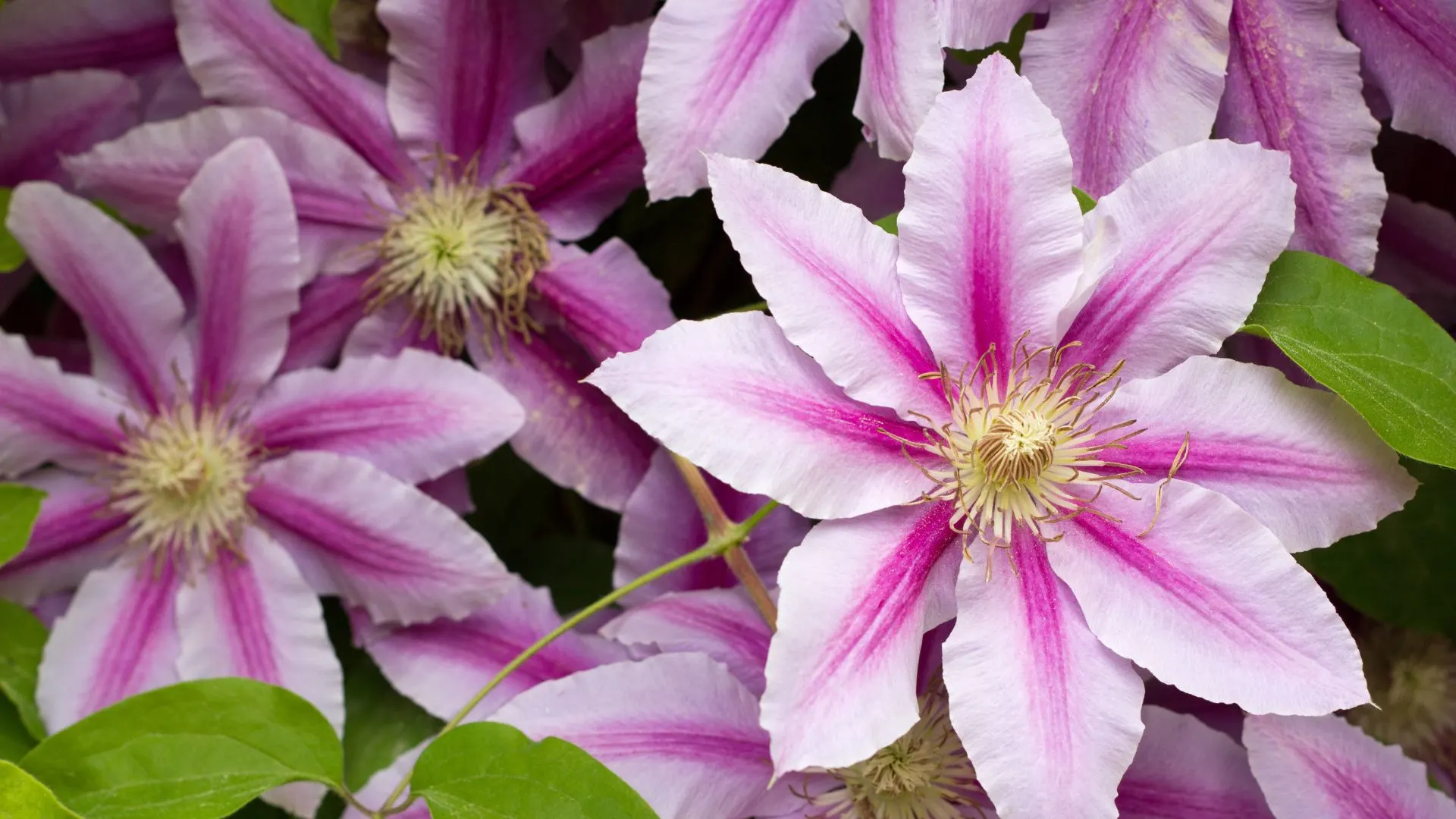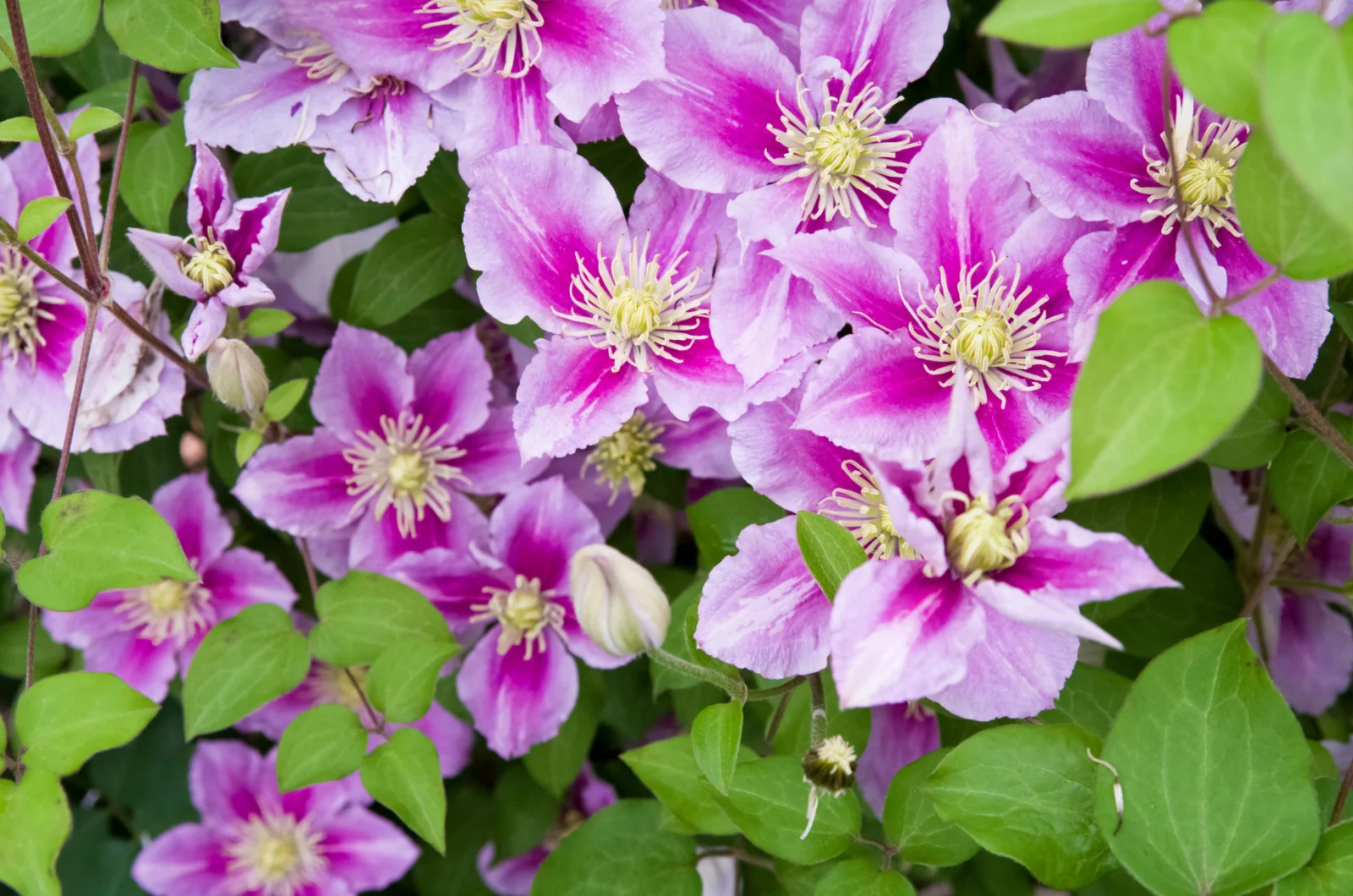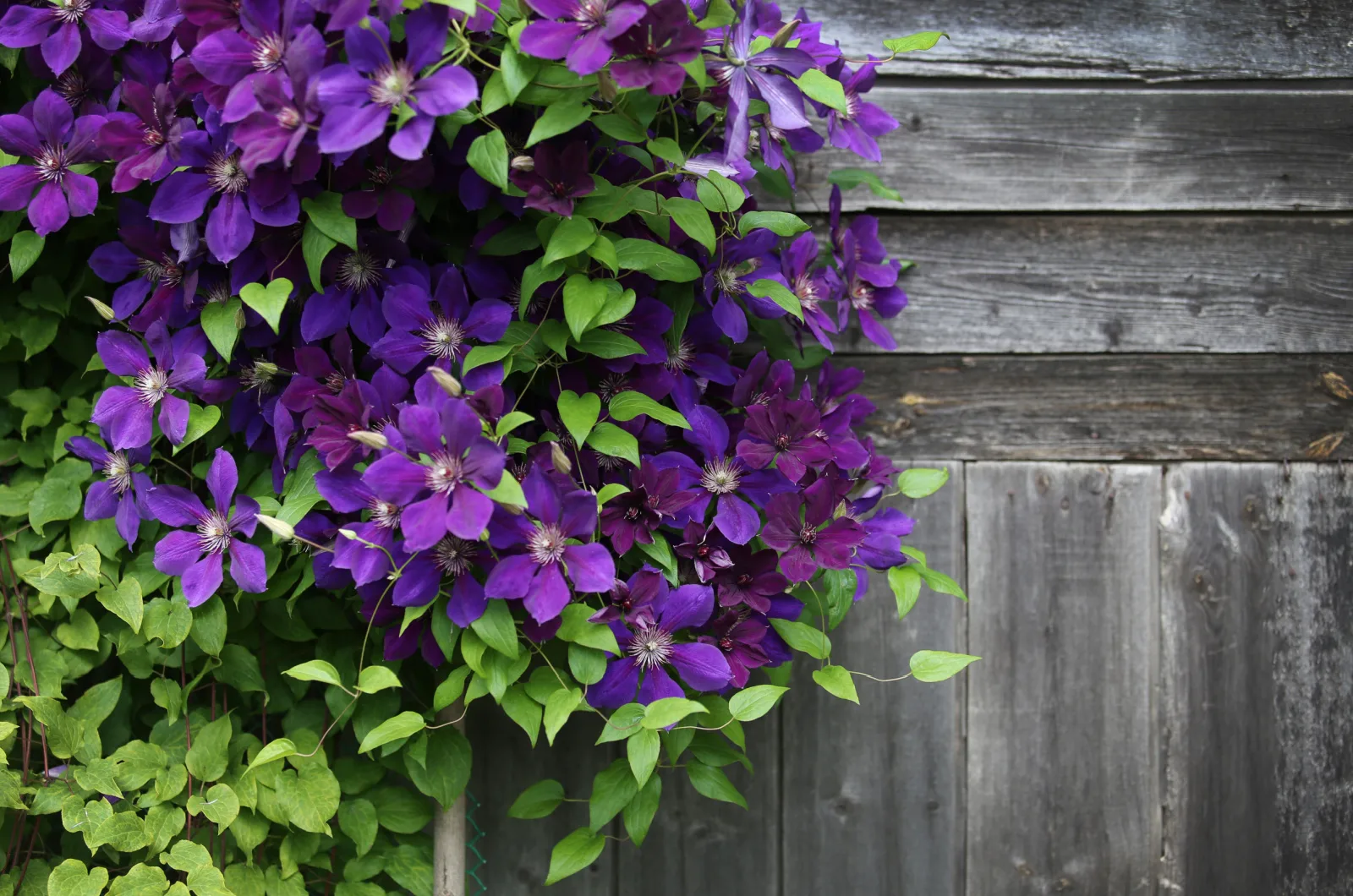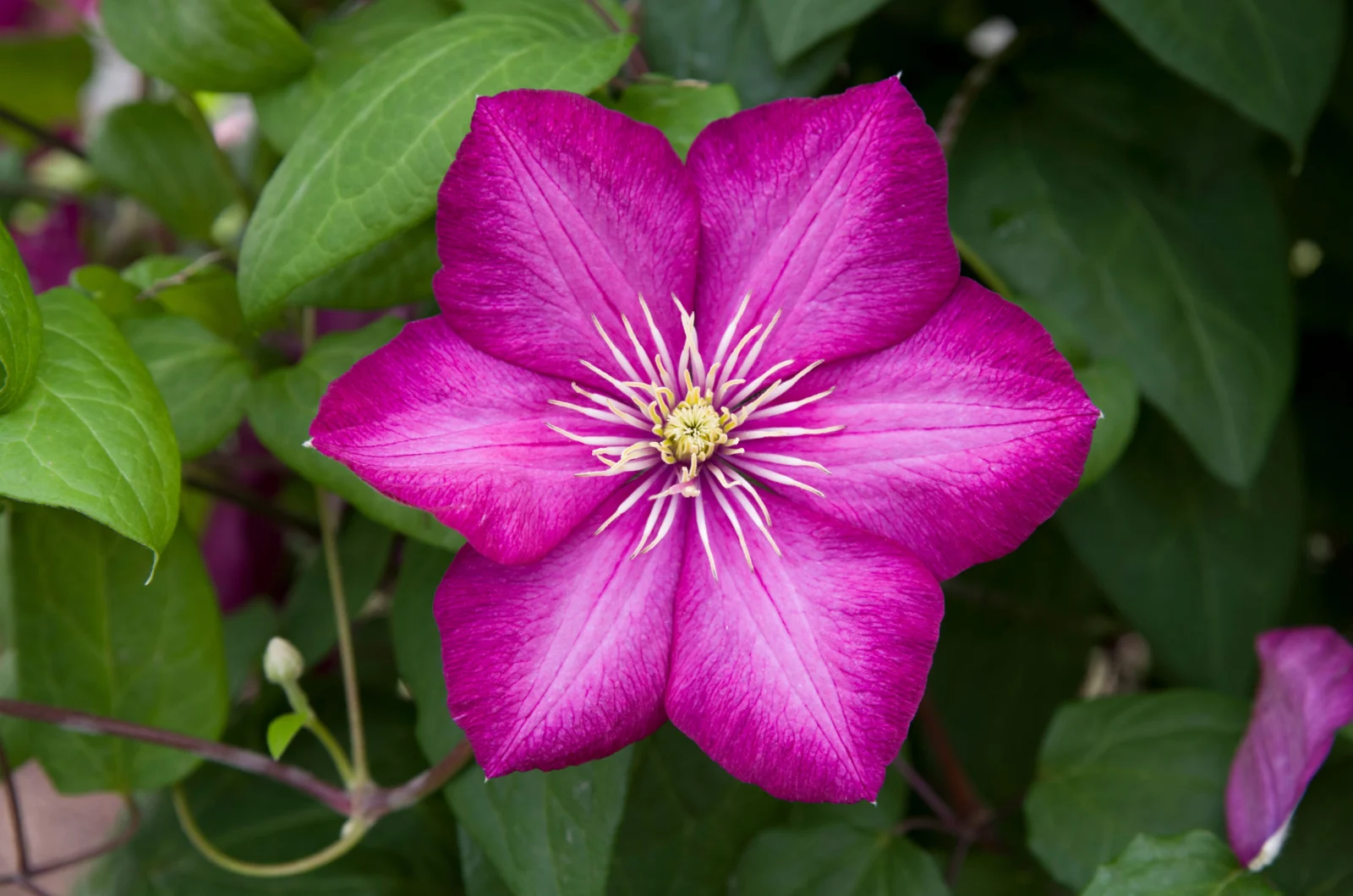The splendid blossoms of clematis plants enchant gardeners worldwide. One of the best things about this plant species is that it isn’t finicky about growing conditions.
It’s pretty easy to get it to bloom and that’s why clematis is commonly chosen by beginners. However, if you want your clematis vines to produce an abundance of healthy blossoms, you need to prune them.
This gardening practice has numerous benefits for plants in general; it encourages healthier and more robust growth.
In this article, I’ll show you how and when to prune clematis vines to get the most flowers. Not all clematis species bloom at the same time, so it’s essential to know which variety you’re growing and the best time to prune.
Let’s learn everything!
Pruning Early Blooming Clematis Varieties
The first group of clematis consists of early-blooming varieties. Many gardeners choose these varieties because they require little pruning. However, this does not include pruning the dead, diseased, or discolored clematis plant parts and you should never skip this part.
During the first year of growth, these early bloomers generate blossoms on old vines. There’s no need to prune until the second year of growth.
Your garden will be full of blossoms in the spring and, shortly after the flowers occur, you can start reshaping, cleaning, and deadheading the vines.
This method allows the vines to keep displaying new growth throughout the season and prepare themselves for the following year.
Pruning Early Summer Blooming Clematis
The common clematis hybrids you see in nursery stores actually belong to the group of early summer bloomers. The best thing about these varieties is that they generate the blossoms on old vines and then the second set of blossoms on new growth.
So, yes, if you meet all the growing requirements of early summer bloomers, they’ll reward you with two sets of their spectacular blooms.
Compared to early bloomers, early summer bloomers require a little bit more pruning. The main reason for this is the repeat blooming. But it really pays off!
If you grow these varieties, you’ll need to start with pruning the unruly, broken, or dead clematis vines. You should complete this task in late winter or early spring when the buds start to swell.
Never leave any diseased or dead parts on your clematis because it will hinder the further development of the plants.
When it comes to pruning living vines, it’s also a task reserved for early spring. Your main goal is to cut back approximately a third of the previous year’s clematis growth. The growth that remains above the soil line shouldn’t be much bigger or smaller than 12 inches.
Be sure that every vine has at least one robust bud after pruning.
These colorful flowering plants aren’t fussy and will keep displaying new growth and bloom repeatedly even after heavy pruning.
It’s also advisable to prune these varieties again later in the season after the first set of blooms starts fading. This will promote healthier growth and you’ll get numerous blossoms during the second blooming.
Pruning Midsummer To Fall Blooming Clematis
Some clematis varieties display blossoms in midsummer until early fall. This group also features multiple hybrids that can be easily found in stores or online.
One of the most famous midsummer to fall bloomers is the Clematis jackmanii, which has large, captivating purple blooms. This plant is commonly chosen as a perennial for fall gardens.
When it comes to pruning, this group is closer to the early bloomers, which means they require little pruning.
If you grow these clematis varieties, you should cut them back every year. This will encourage flower production and new growth in the following growing season.
The buds typically begin to swell in late spring and that’s the perfect time for pruning. Cut down the clematis vines so that approximately a foot remains above the ground level.
Don’t worry, all clematis varieties grow really fast and they’ll be back on track after pruning in no time!
Tips For Growing Clematis
As mentioned before, clematis doesn’t need much to thrive. However, we can’t really leave them to grow on their own and expect good results.
Here’s a table with an overview of the basic care requirements for clematis plants.
The thing is that after pruning the living foliage, branches, and vines, the plant loses a great amount of nutrients and becomes weaker. To avoid this issue, simply apply a fertilizer with low nitrogen concentration in early spring.
As your clematis develops further, it will benefit from the application of a balanced fertilizer once a month during the growing season.
When compared to other common flowering plants, clematis is pretty hungry. Well, that’s not surprising because imagine the energy they need to generate so many blossoms!
Another thing you should do for your clematis is apply a layer of mulch around its base. Mulch when the spring arrives and make sure the layer isn’t thicker than 3-4 inches.
You can use various organic mulch types; my personal favorites are wood chips. The main benefits of mulch are moisture retention and soil temperature regulation, which is really important for your clematis during the hot summer months.
It’s also important to remove all the weeds from the soil where you plant and grow your clematis. Remember that weeds compete for nutrients and hinder the growth of the plant.
If you grow your clematis in pots, you can follow the same pruning procedure. It’s essential to know which clematis variety you’re growing because incorrect pruning can lead to fewer blossoms and poor growth.
Many plants, including clematis, will highly benefit from pruning. But remember that successful pruning isn’t possible without proper technique and timing.
Well, now that you know everything about this gardening technique for clematis, there’s no reason why your garden won’t thrive and be filled with splendid blossoms in the following season.





